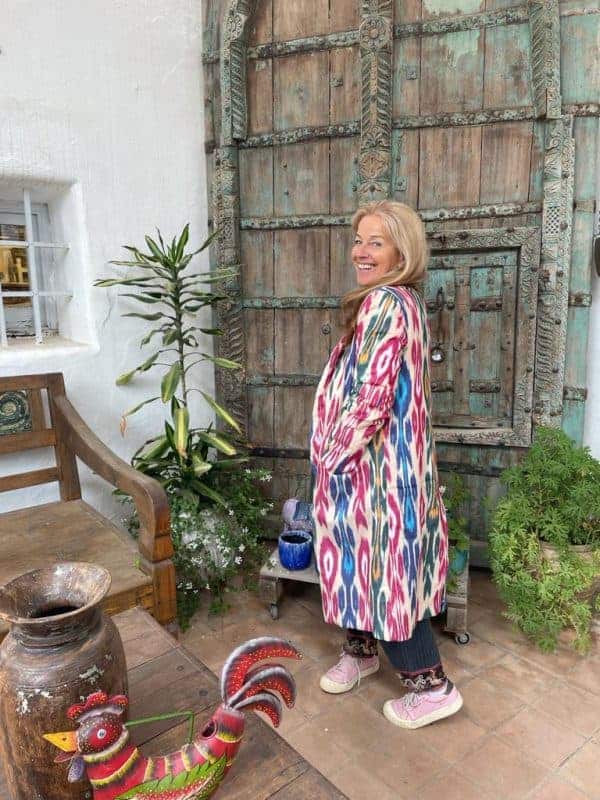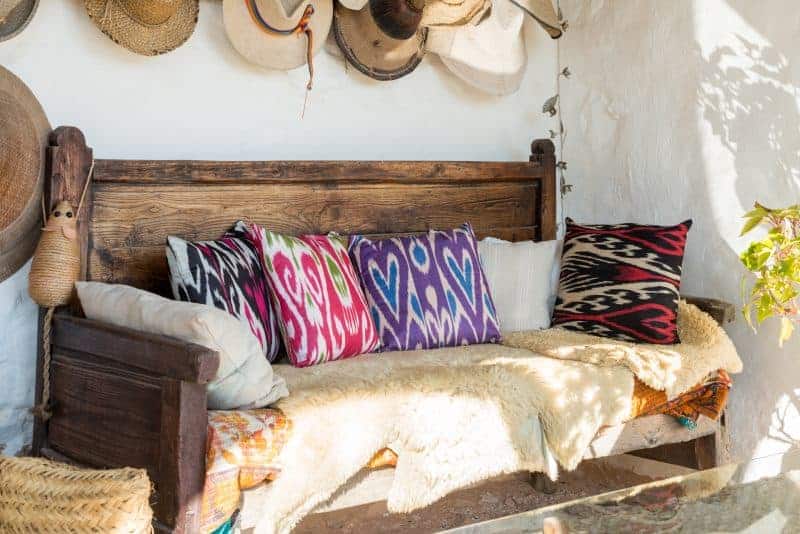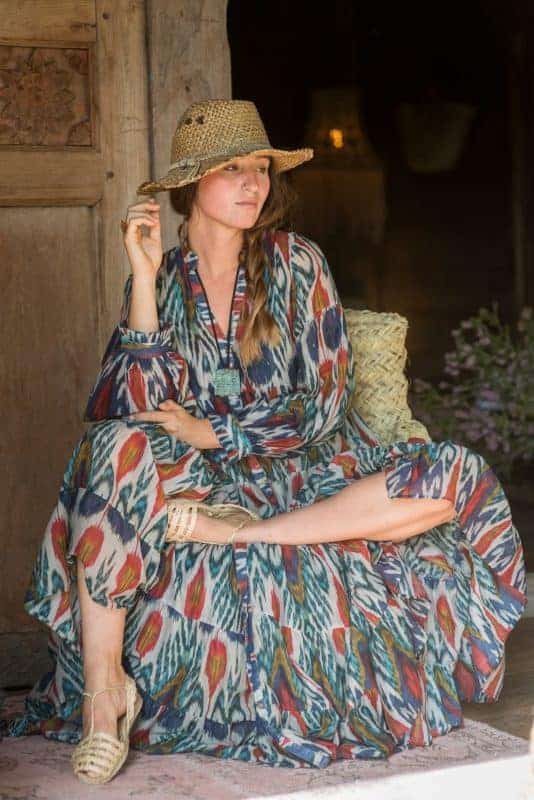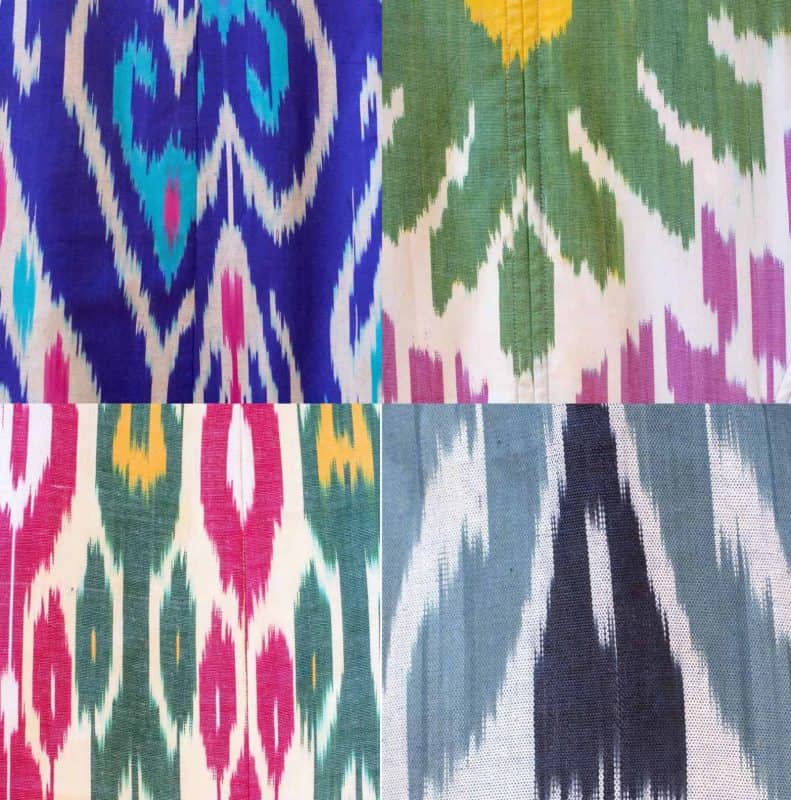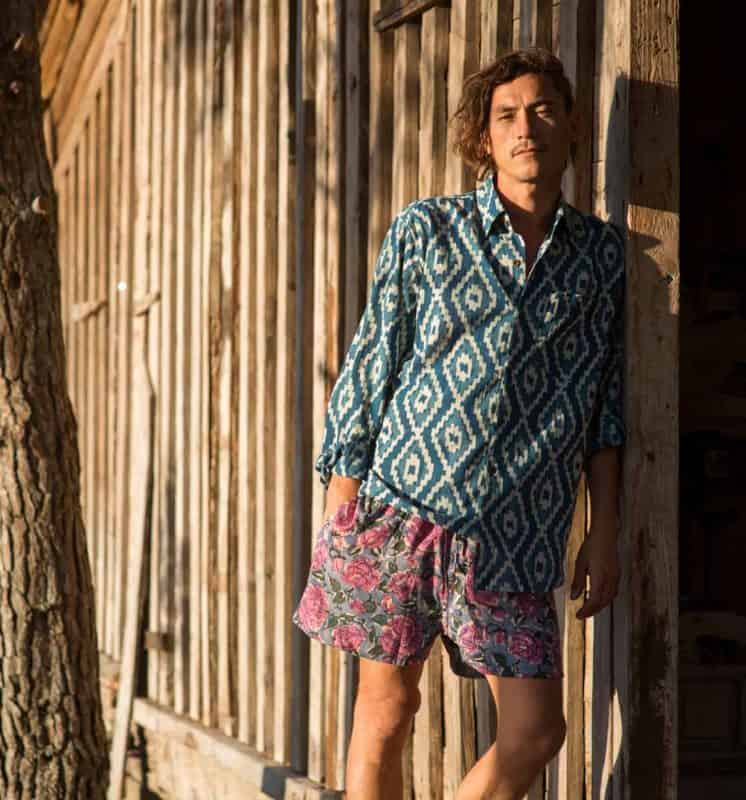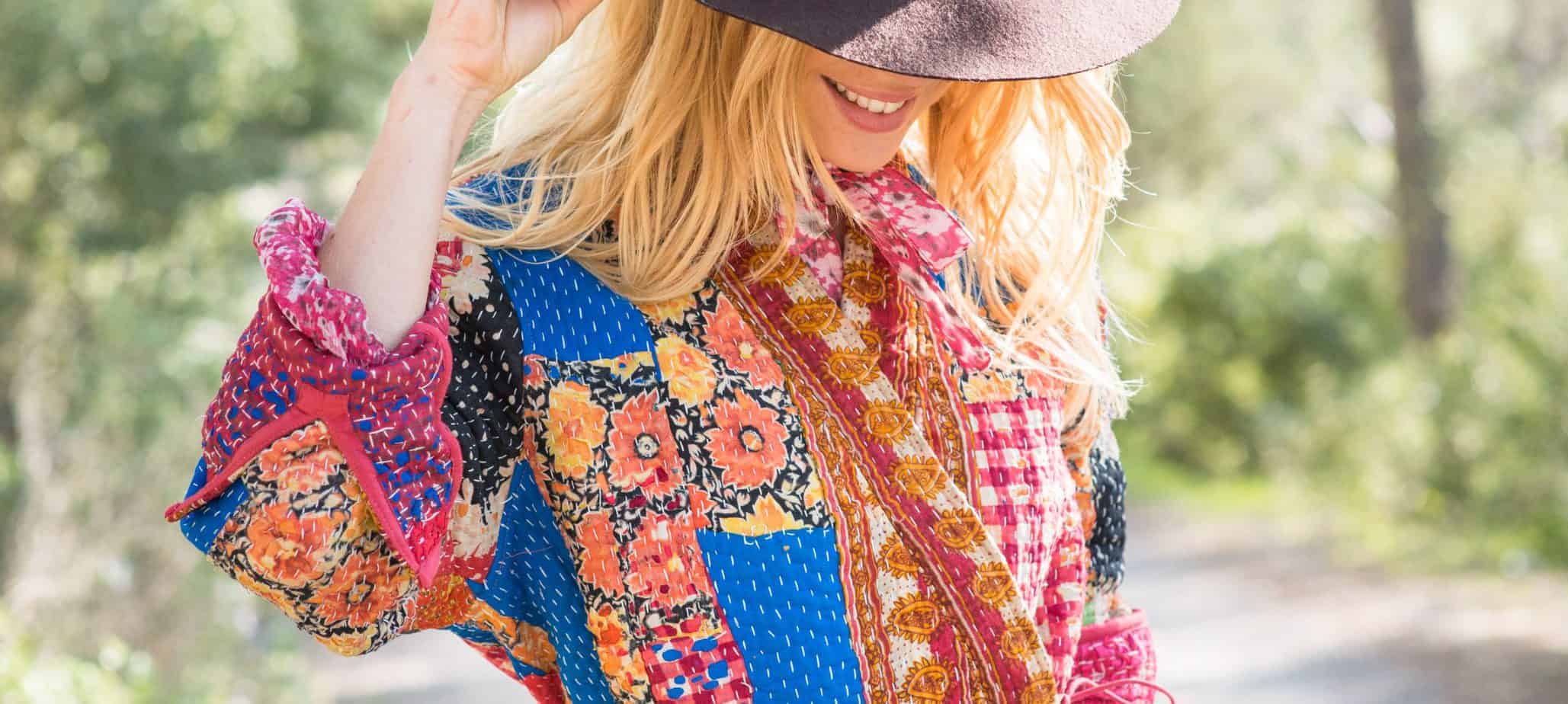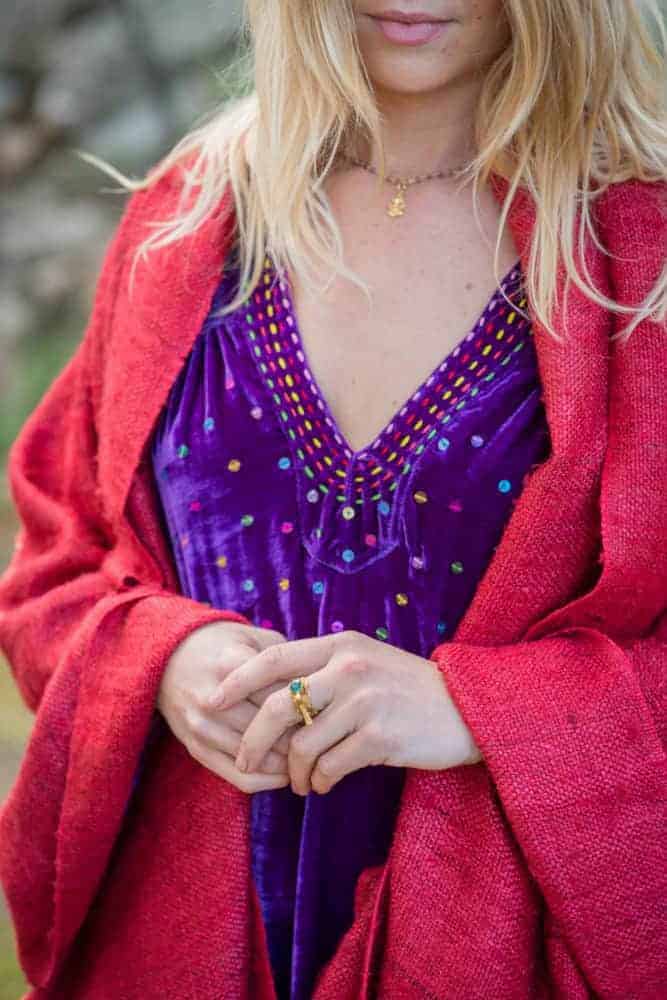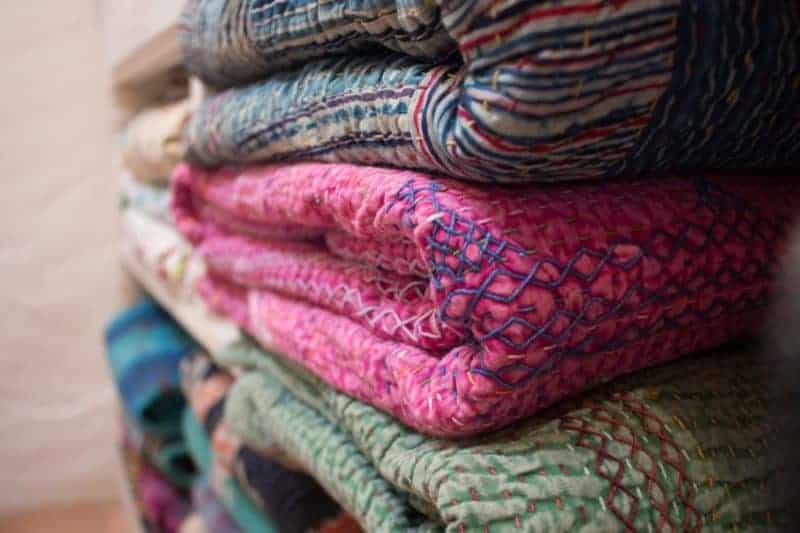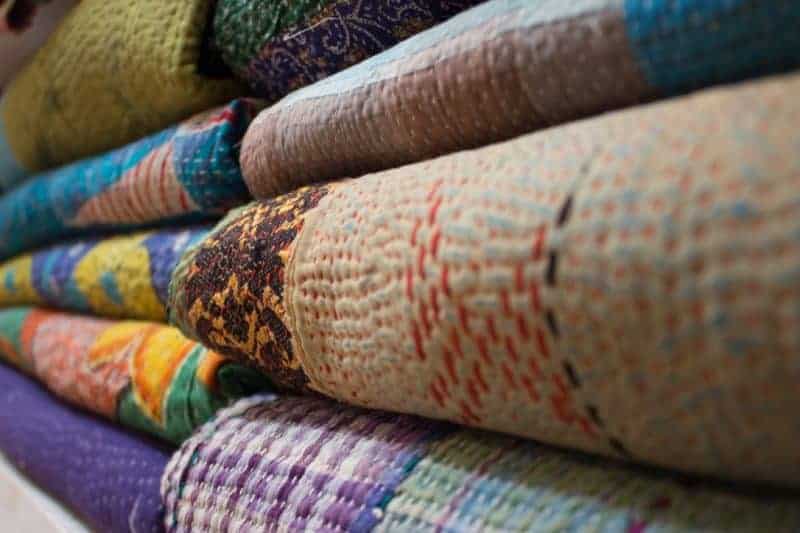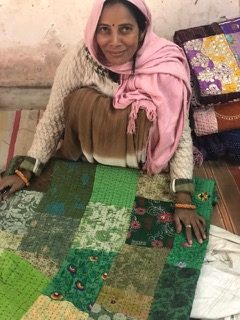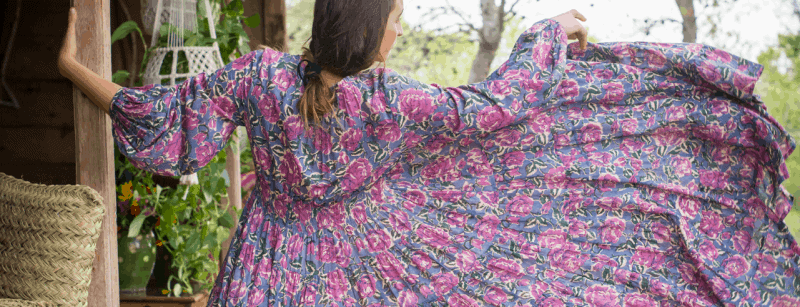My fascination with textiles began at quite a young age and has escalated into full blown LOVE. Beautiful prints, patterns and weavings always catch my eye but investigating the intricacies of how these patterns on woven textiles are made has really become a passion. These different types of age old crafts have incredible stories behind them and one of my missions is to keep these crafts from disappearing. These techniques are so utterly incredible that I truly believe they must never disappear so that future generations can admire them as much as I do! Kantha stitching and hand block printing are two favourite techniques of mine but the more I learn about Ikat, the more I fall in love with it.
Artisan Crafts
ARTISAN CRAFTS
Ikat Dyeing & Weaving
What is Ikat?
Ikat is possibly one of the oldest forms of textile decoration. This intricate weaving technique uses a method called resist-dye in which the yarns are tightly wrapped and dyed before the fabric is weaved. Used to pattern textiles, the ikat technique is very tricky to perfect but end results are a true work of art. Due to the complexity of the technique, Ikat has been known to symbolise wealth and prestige. Most prevalent in Central Asia, Indonesia, India and Japan, ikat is also found in many cultures and is known as daraee in Persian which translates as wealth, and this fabric is often included in a bride’s dowry during wedding ceremonies.
What makes it so special?
The word ikat in Indonesian literally means to tie or to bind. The name of the finished ikat woven fabric originates from the tali (threads, ropes) being ikat (tied, bound, knotted) before they are put in celupan (dyed by way of dipping), then berjalin (woven, intertwined) resulting in a berjalin ikat – reduced to ikat. The paronym ikat is now universally used to describe the process and the cloth itself, regardless of where the fabric was produced or how it is patterned. I could spend hours watching ikat weavers at work and often do when I’m on sourcing trips. Aligning the dyed yarns in order for a pattern to come out perfectly is immensely tricky and a beloved characteristic of ikat textiles is a blurred aesthetic, which is often prized by textile collectors. The patterns in the ikat weave are diverse and can vary by region with common motifs including webbing, stars, dots and even hearts as seen on our beautiful cushions. I have used ikat prints on many of my clothes designs, in quite a few different colour-ways.
The Technique
The main types of ikat weaving are weft ikat, warp ikat and the magnificent double ikat. I won’t go into too much detail but would love to share a little bit about how each one is made just so you can understand how special it really is. Ikat is popular all around the world and many different cultures have their own adaptation of it, each just as intricate as the next.
Weft – the crosswise threads on a loom that are passed over and under the warp (vertical) threads to make cloth and the weft yarns are dyed a solid colour. In weft ikat it is the weaving of weft yarns that carry the dyed patterns and so the pattern only appears as the weaving proceeds. Weft ikat is much slower to weave than warp ikat because the weft yarns must be carefully adjusted after each passing of the shuttle to maintain the clarity of the design. The beautiful abstract geometric patterns are so difficult to achieve that in some ikat traditions in Gujarat, ikat weaving is a two person job.
Warp – the lengthwise or longitudinal threads on a loom over and under which the weft threads are passed to make cloth. In warp ikat it is only the warp yarns that are dyed using the ikat technique and the ikat pattern is clearly visible in the warp yarns wound onto the loom even before the weft is woven in. Although still very tricky, warp ikat is slightly easier than either weft ikat or double ikat and begins with winding the fibres onto a tying frame and splitting them into bundles. If you’re having trouble picturing the process, just imagine making paper dolls, with threads rather than paper. The thread bundles are folded together to create a basic ikat motif (BIF) that will be repeated once the dyed threads are unfolded. Wrapping these fibres tightly prevents unwanted dye penetration and the whole procedure is repeated, depending on how many colours are being used. South American and Indonesian ikats are known for precise warp alignment where the weavers adjust the warp threads on the loom so the patterns appear clearly and strips of bamboo are used to keep everything in place. Patterns can be seen in the warp threads even before the plain coloured weft thread is woven in. Some warp ikat traditions use a mirror image running down the middle so that the pattern woven on the right is duplicated on the left in reverse order.
Want to get more complex?
If you’re not already amazed enough by the complexity of this craft, then let me tell you about double ikat! This is where both the warp and weft yarns are tied and dyed before being woven into a single textile. Double ikats are incredible and understandably quite rare. This long wall hanging is one of my favourites and is a Sumba vintage ceremonial piece made using vegetable dyes and the intricacies of the double ikat weave as well as a mirror image.
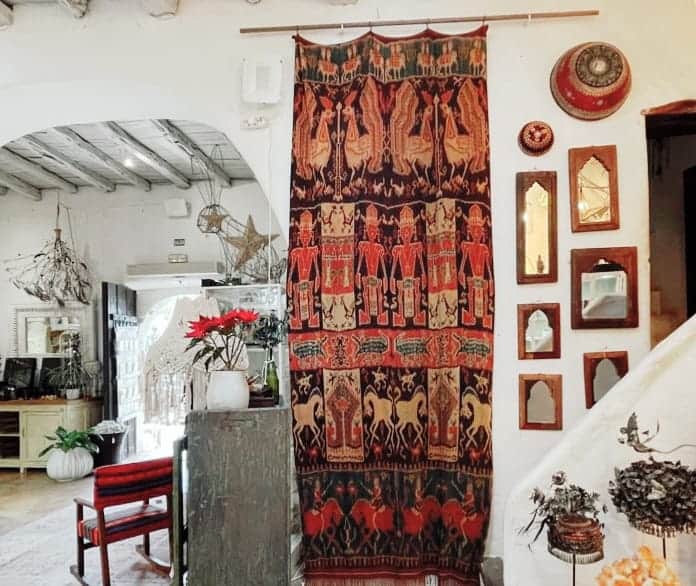
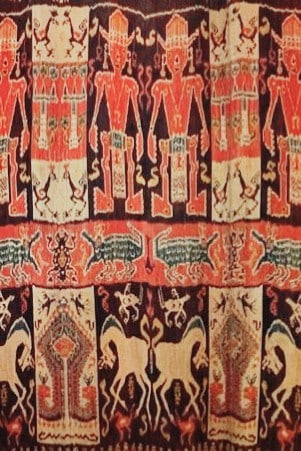
If all you can think about now is the beauty of ikat, pop in and browse my lovely collection of pretty ikat prints as well as my funky Ikat Rebecca & Kirsty Coats, which are fun and easy to wear long coats made from a cotton/silk traditional ikat. They feature a collar, side pockets and a pretty hand block cotton print lining. No two are the same and each one was designed with love.
ARTISAN CRAFTS
Kantha Embroidery
The History of Kantha
The origins of the kantha stitch can be traced back to the pre-Vedic age (prior to 1500 BCE) and kantha refers to both the style of the running stitch, as well as the finished piece (i.e. Kantha jacket, Kantha blanket etc). The word Kantha literally means rags in Sanskrit, which is the perfect definition as a finished kantha piece is composed of all sorts of pieces of scrap fabrics, including unused pieces of beautiful saris.
Traditionally made by rural housewives in West Bengal, it is a craft practiced by women of all classes, passed down through generations from mother to daughter. Lovingly taught as a simple method of recycling discarded or torn pieces of fabric. The kantha stitch is an ideal way of upcycling the old and making it stronger than ever.
The rugged, patched cloth finish awakens feelings of nostalgia and knowing that each square of fabric served a different purpose in a previous life adds so much character to each piece. A fabric rebirth! There is something so primal about hand sewn textiles and we love the imperfect yet somehow perfect finished effect of random pieces of patchwork that have been lovingly stitched together into large, colourful blankets, cushion covers, jackets and coats.
How do we use it?
Perfect for both men and women, our Kantha Jackets are a great example of this wonderful running stitch – choose between our funky box jacket, the stylishly oversized jacket, a hip length version or even the Kantha Riding Jacket for a more fitted look. As well as these wonderful jackets, we have a wide selection of kantha blankets & bedspreads in all colours and kantha cushions in all shapes and sizes. A number of the dresses, tops and tunics in my Victoria Made With Love & Laughter label are hemmed with pretty lines of colourful running kantha stitch – it really adds to the piece, especially our velvets with contrasting kantha stitch!
These are all handmade for us by skilled women workers in Jaipur, India and also outside Kathmandu, Nepal.
ARTISAN CRAFTS
Hand Block Printing
What is Hand Block Printing?
Hand block printing is a skill that requires the patience of a saint! I have always collected old hand block prints which are a work of art in themselves, even before they are used as printing blocks.
Hand carved patterns are sculpted from blocks of wood to essentially create a stamp. The stamp is then dipped in inks or dyes (wherever possible we prefer to use vegetable dyes) and then the process of manually stamping the print onto large rolls of fabric begins. Depending on the print, sometimes multiple blocks per motif are used!

How did it originate?
Although it most likely originated in China around 4,500 years ago, it has been used in India for hundreds of years, with the skill being passed down through generations. Not only does this skill produce incredible prints, it is also one of the more sustainable methods around as the fabric must first be soaked in water to remove starchiness in the fibre and many Indian Artisan Crafts will do this in the local rivers, reducing the need for water consumption.
India and Hand Block Printing
It is said that India has yielded one of the most magnificent pattern vocabularies ever, creating uniquely complex designs primarily using a series of combinations including mud-resist printing (dabu) which allows certain areas of the print to be free of the dye.
Sourcing trips to India always include a visit to Jaipur where I thoroughly enjoy watching the chippas (the caste of printers) bring the whole process to life. Always working with small family businesses and doing my part to make sure they are working in fair conditions, one of my main passions is to keep this amazing craft alive. This is mostly done by associations teaching those less fortunate the skill and how to implement it.
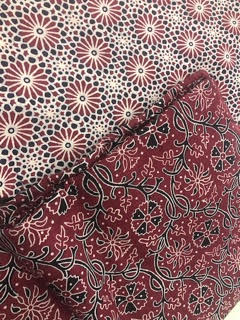
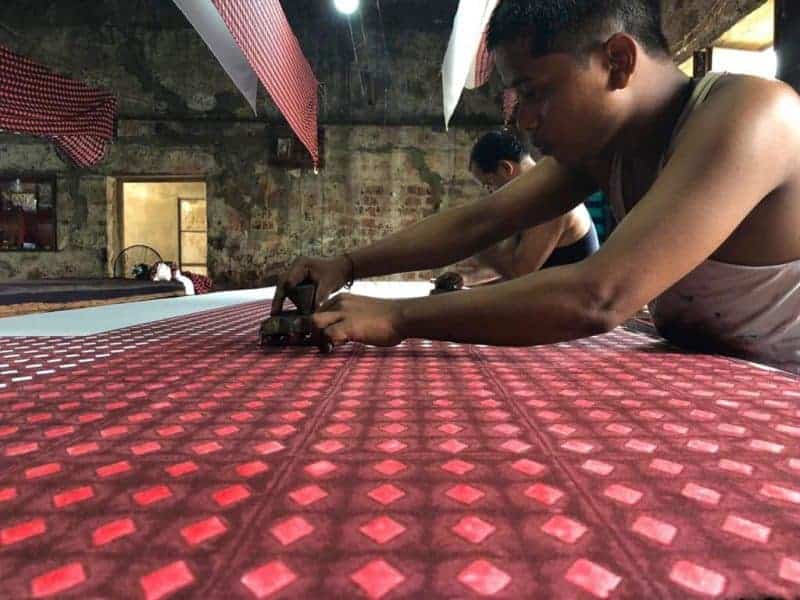
Help us to keep this incredible craft from disappearing by supporting fair trade whenever you can. If you’d like to know more about hand block printing or see some of the pretty pieces we have, pop in for a visit, browse our online shop or get in touch.

